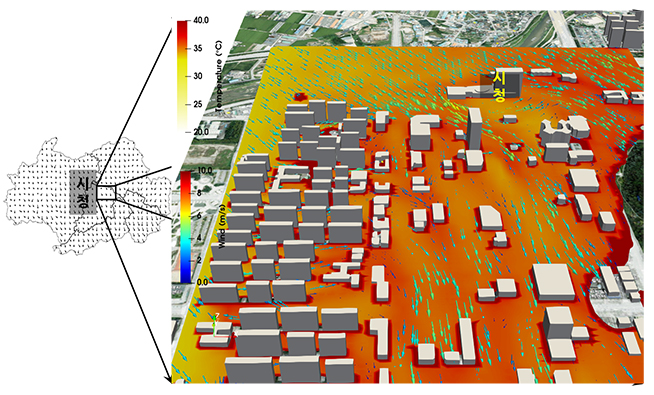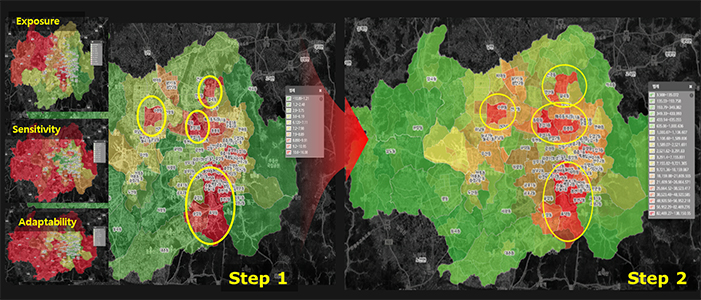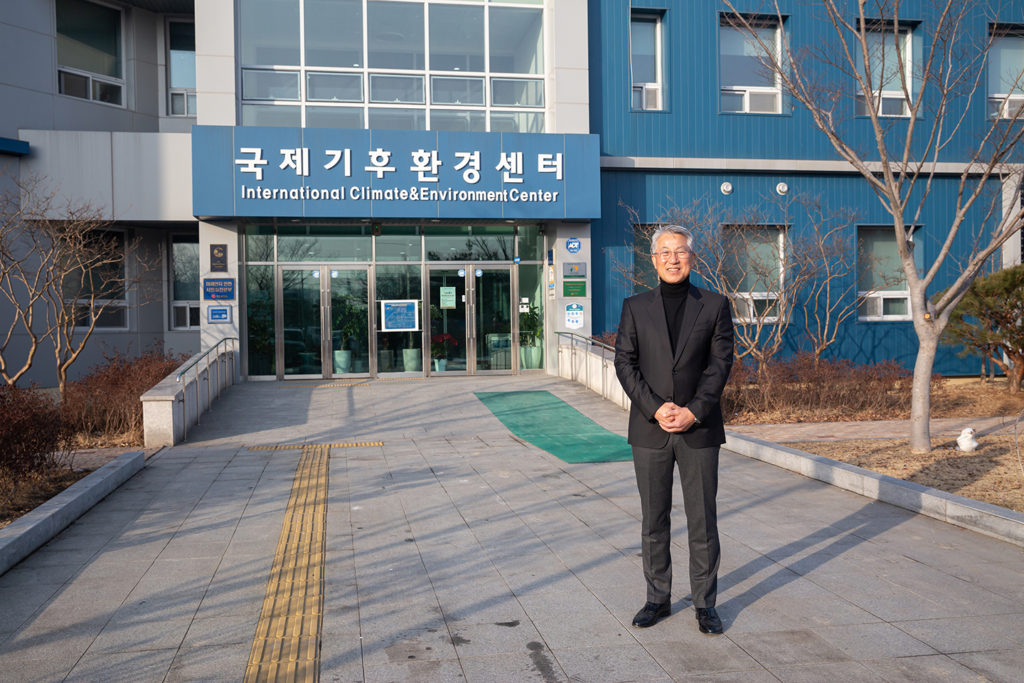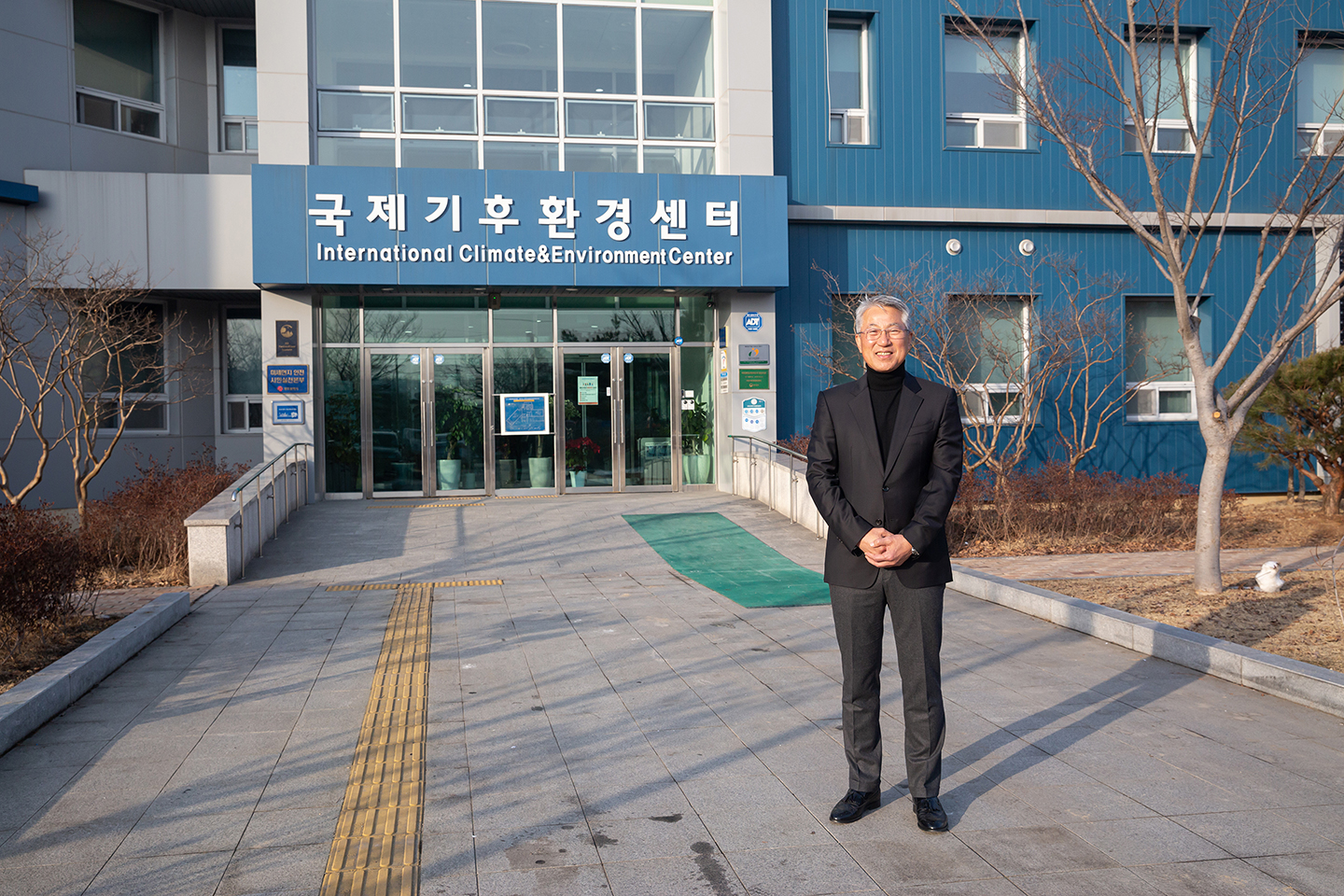Climate Crisis Response
ICEC, a Leader Towards a Sustainable Gwangju.
Interview by William Urbanski.
We are all aware of climate change, and we are aware that it is affecting the environment around the world, but are we aware of whether or how Gwangju may be affected? The Gwangju News has recently caught up with Dr. Yun Won-Tae, President of the International Climate and Environment Center, for an interview on the climate crisis and what is required to create a sustainable Gwangju
Gwangju News (GN): First of all, Dr. Yun, thank you for taking the time to do this interview. Could you please tell us about your background, both academic and personal?
Yun Won-Tae: Thank you for inviting me. I appreciate your interest in the International Climate and Environment Center (ICEC). It is a pleasure to introduce myself and my work to the Gwangju News’ subscribers. I grew up in the countryside and was always interested in nature; clouds especially fascinated me. This led me to the study of meteorology at the University of Cologne in Germany, where I earned my PhD.
Upon returning to Korea, I went to work for the national government as head of the Korean delegation to the Intergovernmental Panel on Climate (UN IPCC) and later as president of the National Typhoon Center of the Korea Meteorological Administration. I have also worked with the World Meteorological Organization (WMO) as an expert advisor.
My family and I moved to Gwangju in 2019. Since then I have been serving as president of the International Climate and Environment Center (ICEC), secretary general of the Urban Environmental Accords (UEA), and professor of meteorology at Chonnam National University. In dealing with climate change and environmental issues in the city, I am focused on the strategic development of resilience and low-carbon sustainability of Gwangju.

GN: Please introduce the ICEC to our readers. What kind of initiatives is the ICEC involved in?
Yun: As we are all aware, more than half of the world’s population resides in cities. Dense population in urbanized areas equates to heavy energy consumption and significant greenhouse gas production. So, cities are hot spots of vulnerability and exposure. Climate change calls for new approaches to sustainable development that take into account complex interactions between climate, social, and ecological systems.
Founded by Gwangju City in 2012, the ICEC was originally called the Climate Change Response Center. Later, when it was merged with the secretariat of the Urban Environmental Accords, the name was changed to the International Climate and Environment Center. For nine years, the ICEC has been committed to the vision of creating a sustainable Gwangju through vigorous efforts to research and develop climate change response policies, support green living among citizens, and realize a low-carbon green city.
The ICEC has three basic goals: (a) developing and disseminating science-based technologies and policies for urban environments which, of course, includes Gwangju; (b) raising public awareness of the climate crisis and encouraging participation through inclusion and the education of local citizens; and (c) promoting knowledge-sharing and capacity-building programs via a global network of cities called the Urban Environmental Accords (UEA).
GN: Could you briefly explain the Urban Environmental Accords (UEA)?
Yun: Simply put, the UEA is a promise. In June 2005, mayors from across the globe gathered in San Francisco for the United Nations World Environment Day. Sharing a common belief, city mayors voluntarily committed to implement and encourage city governments to adopt actions to realize the right to a clean, healthy, and safe environment for all members of society.
Currently a global collective of 156 member cities from 51 countries, the UEA continues to build upon and extend the efforts put forth by the signatory mayors. Through research, discovery, and development of innovative ideas and best practices, as well as various knowledge-sharing and capacity-building programs, the UEA endeavors to continually move forward to achieve long-term sustainability in our urban environments and beyond.
Through the UEA network, the secretariat shares ideas, opinions, and suggestions with member cities for sustainable urban development and promotes education to strengthen the efficacy of the city’s efforts. In collaboration with the Korean International Cooperation Agency (KOICA), the UEA recently launched a three-year training program. In October of last year, 25 civil servants of the Cambodian Central Government participated in the first of a three-part series on Sustainable Water Management via an online platform. In future sessions, we plan to expand and diversify the scope and content of the program.
Subsequent to the 2005 gathering, the 2011 UEA Summit was held in Gwangju and continues biennially, hosted by an elected member city, including San Antonio (Texas, USA), Iloilo City (Philippines), and Melaka (Malaysia). Next year it will return to South Korea, as the 2021 UEA Summit and Executive Committee Meeting and will be held in Yeosu.
GN: Could you further introduce some of the key programs of the ICEC?
Yun: Sure. The world is suffering from extreme climatic events, and Gwangju is no exception. As annual average temperatures are expected to rise in the next ten years, extreme climatic events such as heatwaves, increases in fine dust particles, and heavy rains with flooding are expected to become much more frequent and severe.
When analyzed, the data collected from these programs provide vital information for sound policymaking in fields of climate adaptation and response, as well as citizen-led initiatives. These tools are also made available to the international community via UEA networks and related organizations. In this way, Gwangju and the ICEC share their efforts in creating sustainable cities globally, helping cities around the world build their capacities for urban resilience.
The Urban Assessment Model System (UAMS) is a three-dimensional, mathematical simulation model for calculating air flows, heatwaves, and fine dust dispersions in orographically structured terrain. The UAMS is suited for studying the climatic effects of local land use changes as well as for analyzing the climate of urban and suburban areas. The UAMS was developed to evaluate the environmental conditions within entire cities, providing information for decision-making in areas vulnerable to climate change, and it also helps to address the stratification of climate analysis difficulties.

In order to effectively adapt to and mitigate the effects of the climate crisis, information based on scientific analysis is essential to urban planning and environmental policy development. To this end, the ICEC developed and operates the Urban Assessment Model System (UAMS) and the Urban Carbon Management System (UCMS), both of which I will further explain in a moment.

The Urban Carbon Management System (UCMS) is used to regularly monitor and manage carbon emissions to facilitate the reduction of greenhouse gas (GHG) produced in urban and suburban areas. GHG reduction regulations are being strengthened worldwide, with the importance of urban-based GHG reduction gaining more attention. Recently, a number of countries and cities, including Gwangju, are making commitments to move to a net-zero emissions economy. This is in response to climate science showing that this is necessary in order to halt climate change. Net zero means that any emissions are balanced by absorbing an equivalent amount from the atmosphere.

The ICEC continually monitors carbon emissions in Gwangju and the surrounding metropolitan area. Establishing and employing the UCMS in the city, ICEC seeks to identify the characteristics of current GHG emissions to aid in the reduction of future emissions.

GN: I feel a problem with the global warming dialogue worldwide is that it presents environmental problems (like large-scale greenhouse gas emissions) as such huge problems that it makes individuals feel helpless. What are your views on this, and are there things that individual citizens of Gwangju can do to lessen their negative impacts on the environment?
Yun: In addition to administrative support (policies, regulations, etc.), public awareness is essential. Gwangju City and the ICEC continue to make their best efforts to encourage and support community participation through various projects. Sharing science-based information via education programs, special events, and campaign drives, the ICEC works directly with citizens to foster community instructors. Fostering instructors contributes to creating jobs in Gwangju, as well.
GN: Gwangju, as with most major cities, has substantial traffic, which causes a whole host of environmental and pollution issues. As well, some people just seem to be opposed to taking public transportation. Do you think there are initiatives the city could introduce (carpool lanes, for example) to reduce the number of cars on the road?
Yun: A key factor in reducing the number of cars on the road is to provide efficient public transportation, specifically eco-friendly and user-friendly public transport. Construction of the second subway line began last year, and the first of three phases will be open in 2023, with phases two and three opening in 2024 and 2025, respectively. Currently, Gwangju has 37 electric buses and six hydrogen-powered buses in use. The city plans to build more charging stations and ramp up the hydrogen production base within the next couple of years. In the long term, Gwangju plans to realize 100 percent renewable energy for the bus system by 2030.
GN: Speaking of cars, I have been seeing more and more Teslas and electric cars on the road. Do you think electric cars are a good way to address the problems associated with car emissions?
Yun: Yes, it is a good start. The argument has been made that electric cars are charged by energy produced at power plants that are burning fossil fuels. It is a valid point, but reducing the number of cars with internal combustion engines is the better choice in terms of overall energy efficiency and GHG emissions. However, in order for electric cars to have a more meaningful impact, the source of electricity must become environmentally friendly, such as solar and wind power. Gwangju plans to increase the generation of renewal energy needed to realize carbon neutrality. The transition to eco-friendly energy sources will greatly reduce GHG emissions in the vehicle and power-production sectors.
GN: There is no question that greenhouse gas emissions are a serious contributor to environmental problems and global warming. But too often, people use greenhouse gas emissions as a single-factor explanation for all environmental problems. What, in your opinion, are other, more commonly overlooked contributors to environmental problems, especially with respect to Gwangju?
Yun: To be clear, climate change is the most significant environmental problem humanity will face over the next decade, but it is certainly not the only one. Water shortages, loss of biodiversity, air pollution, and waste management are a few of the challenges we must address, as well. But it is important to realize that everything is interconnected, it is a circular ecology. Global warming due to GHG emissions is accelerating climate change, which is attributable to severe drought conditions and exacerbates water shortage problems. Poor waste management practices have catastrophically damaged our oceans, creating serious environmental issues that affect all life. The WHO estimates that 90 percent of humanity breathes polluted air, and the sources of air pollution are the same sources of GHG emissions. So, you are correct in noting that GHG emissions are not the only contributor. We should look at the entire picture and realize that each environmental issue is very much linked to the others.
GN: Discussions on pollution and global warming tend to focus on the doom-and-gloom aspects of climate and environment change. What are some positive changes or signs of progress that you have seen in Gwangju and around Korea?
Yun: The whole world has been aware of the significance of the climate crisis. Armed with the knowledge that we must all act together, world leaders have made announcements of their plans for the coming years. They are making commitments to move to a net-zero emissions economy. Like most countries, Korea has declared that it plans to be carbon neutral by 2050. In line with these efforts, on July 21 of last year, Gwangju committed to becoming a carbon-free city by 2045 and announced the Gwangju General Plan for the AI-Green New Deal.
To prepare and roll out this plan, Gwangju is organizing a specialized support group this year. Led by the ICEC, this group will attract projects in related fields, make assessments on the performances of the projects, and help build community networks for citizen participation. In this way, the ICEC plays a key role in the realization of carbon neutrality and the Green New Deal of Gwangju. Thinking globally while acting locally, the UEA will aggressively work within its network to aid in mitigating further environmental damage.

GN: Thank you, Dr. Yun, for mitigating the gloom-and-doom fears that so many of us hold. It is immensely reassuring to know that Gwangju City and the ICEC are striving to alleviate the climate crisis and create a sustainable Gwangju.
Graphics courtesy of ICEC.
Photographs by Kim Hillel Yunkyoung.




